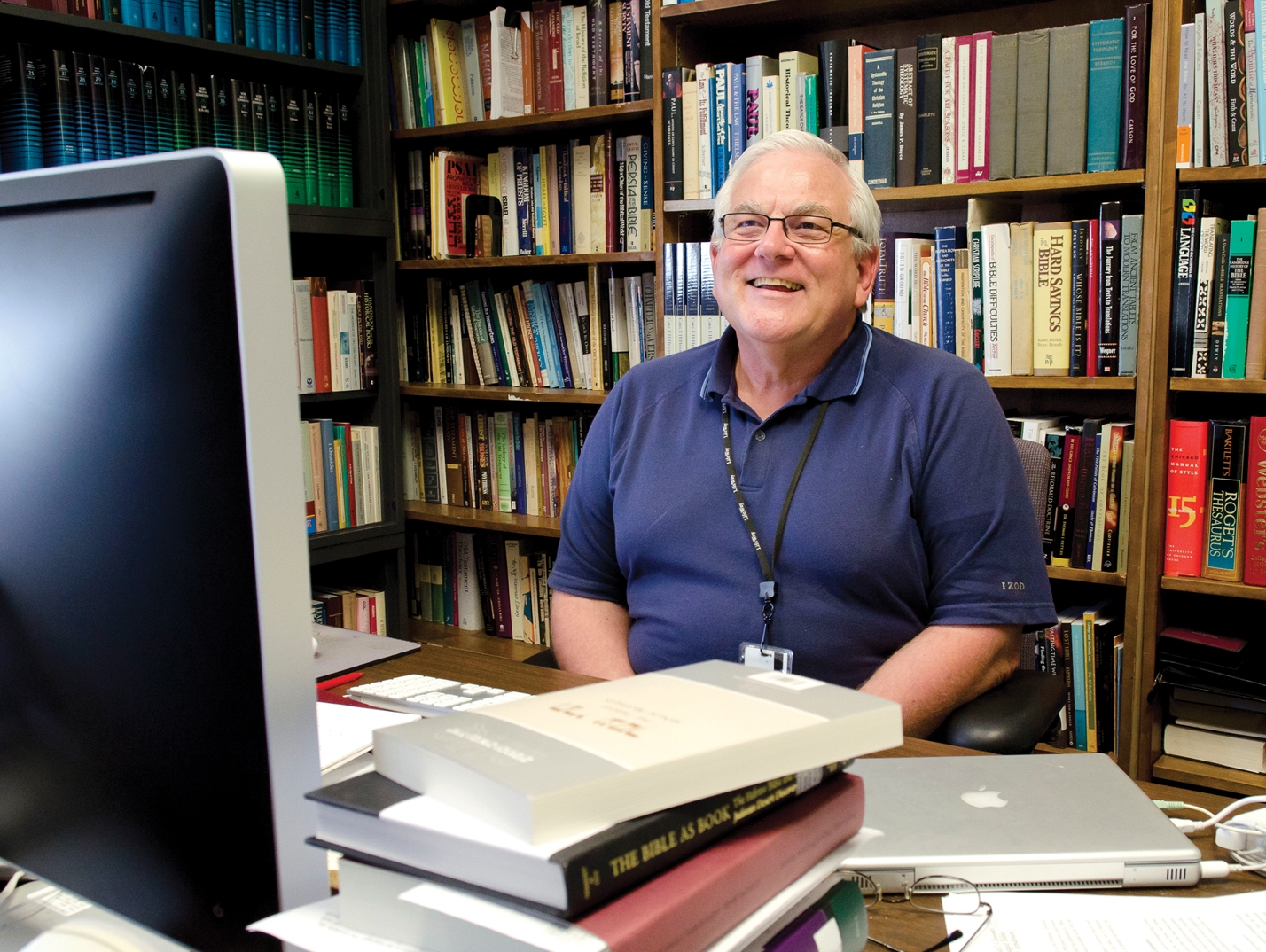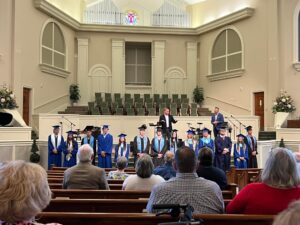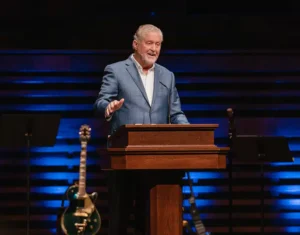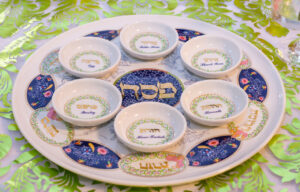
Editor’s note: This year marks the 10th anniversary of the release of the Holman Christian Standard Bible (HCSB) New Testament.
NASHVILLE, Tenn. (BP) — By the mid-1990s, many Bible scholars, pastors and general leaders had come to believe a new Bible translation was needed.
The New American Standard was perhaps the most accurate translation, but some felt it was not easily readable. The New International Version and New Living Translation were the most readable, but some questioned if this readability may have eclipsed accuracy and consistency in places. Other major versions were not translations starting from the original Greek and Hebrew texts, but merely revisions of earlier English translations.
LifeWay Christian Resources assembled an interdenominational team of more than 100 scholars, editors, stylists and proofreaders — all committed to biblical inerrancy. After years of work, they produced the Holman Christian Standard Bible (HCSB) New Testament 10 years ago, in 2001, and then released the full Bible in 2004. A revision was released in 2009.
“Our goal was to be as accurate as the New American Standard but to be as readable as the NIV,” HCSB General Editor Ed Blum said. “And I think if you read our translation, you’ll see that it is readable; it is accurate. … I would say we’re the most accurate of all the translations.”
Before the HCSB, Bible translations were produced using one of two approaches: formal equivalence or dynamic equivalence. Formal equivalence versions translate word-for-word from the Greek and Hebrew texts and preserve the grammatical patterns of the original languages wherever they can be reproduced in understandable English. Dynamic equivalence versions of Scripture translate thought-for-thought, not always preserving the structure of the original languages since English does not use the same idioms and grammatical patterns as ancient languages.
The HCSB team attempted to capture the best of both approaches by adopting a new approach dubbed “optimal equivalence.”
According to this approach, the HCSB translated word-for-word whenever such a translation was clear and readable in modern English. When a literal translation did not meet that standard, though, the HCSB used idiomatic English and put a literal translation in a footnote labeled “lit.”
“We share many of the same commitments as formal equivalence translations,” said HCSB associate general editor Ray Clendenen. “That is, we try to render word-for-word translation and translate a verb as a verb, an adjective as an adjective and things of that sort. And we try to translate a particular Hebrew or Greek word the same way throughout the Bible if it’s in the same context.
“But we also share some of the commitments of the dynamic equivalence approach,” he said. “For instance, whereas the formal equivalence approach says, ‘If a literal, word-for-word translation makes sense in English, that’s good enough,’ optimal equivalence shares with dynamic equivalence the value of insisting that the English not only make sense, but that it be natural rather than awkward or wooden.”
Blum added that the HCSB adopts grammatical standards of contemporary American English, not those of British English like the Revised Standard or English Standard Versions. Practically, that means using American style quotation marks, capitalizing nouns and pronouns that refer to deity, and using contractions like “don’t” and “won’t” where appropriate.
The HCSB also places bullets next to common theological terms the first time they are used in a chapter — more often for particularly important or misunderstood terms. Then a list of definitions for those terms is provided in the back section.
TRANSLATION PROCESS
Achieving an accurate and readable English translation was not easy, Blum said. The HCSB team worked 22 times through the Greek text of John, for example, and the book of Isaiah took seven months to complete.
Each book went through several drafts, and translators all worked with English language stylists to achieve the most understandable text possible.
David Stabnow, an HCSB Old Testament editor, recalled the give-and-take process of working with a stylist.
“Usually we came to agreement on a translation that was both good English and accurate to the original without much difficulty,” he said. “But every once in a while we struggled to come to agreement. She would say, ‘That’s not good English,’ and I would say, ‘But we need to be accurate.’ As a result, in no case was accuracy compromised.”
Said Jeremy Howard, Bible publisher at LifeWay’s B&H Publishing Group, “Accuracy and readability are the twin concerns of our approach to Bible translation. The HCSB translation team upheld both of these concerns with every decision they made.”
The translation process was made easier by computer technology. Blum said the HCSB is the first print translation done start-to-finish in the computer age. That allowed the translation team to use Bible software rather than relying exclusively on books. Also, translators communicated rapidly and widely via the Internet, feats that were not possible for translators of previous Bible versions.
All translations were done from standard critical editions of the Greek and Hebrew texts of the Bible, texts compiled by examining all of the available manuscripts and determining what the original authors most likely wrote. By contrast, some other translations are based on texts compiled from far fewer manuscripts.
Wherever there was a question about what the original author wrote, the HCSB team consulted Bible manuscript experts in order to arrive at the best-supported conclusion. In places where various Greek and Hebrew manuscripts contain significant differences, the HCSB includes footnotes saying “other mss [manuscripts] read …” or “Other mss omit ….”
A TRANSLATION FOR ALL DENOMINATIONS
Some people wrongly believe the HCSB is a Bible “by Southern Baptists for Southern Baptists.” But Clendenen pointed out that more than half of the translation team was not Southern Baptist, including Blum, who pastored a Presbyterian church and taught at Dallas Theological Seminary. The original general editor, who died early in the HCSB translation process, had a Plymouth Brethren background.
“It wasn’t done by Baptists,” Clendenen said of the HCSB. “It was done by a broad array of conservative scholars.”
The translation team avoided even the appearance of Baptist bias. For example, in passages where the Greek preposition “ev” is used to describe baptism — baptism “ev” water — the HCSB does not translate the phrase as “baptism in water,” although that is a possible translation. Instead, it renders the phrase “baptism with water” — also an accurate translation but more widely accepted by evangelical translators as accurate.
The translation team says it wants readers of all denominations to pick up the HCSB because it makes God’s will clear by revealing what He originally inspired the authors of Scripture to write.
“The more accurate and understandable the translation is, the clearer it’s going to be what God is trying to say to you,” Blum said. “I believe God’s message is clear in the HCSB.”
–30–
David Roach is a pastor and writer in Shelbyville, Ky. Get Baptist Press headlines and breaking news on Twitter (@BaptistPress), Facebook (Facebook.com/BaptistPress) and in your email (baptistpress.com/SubscribeBP.asp).
















